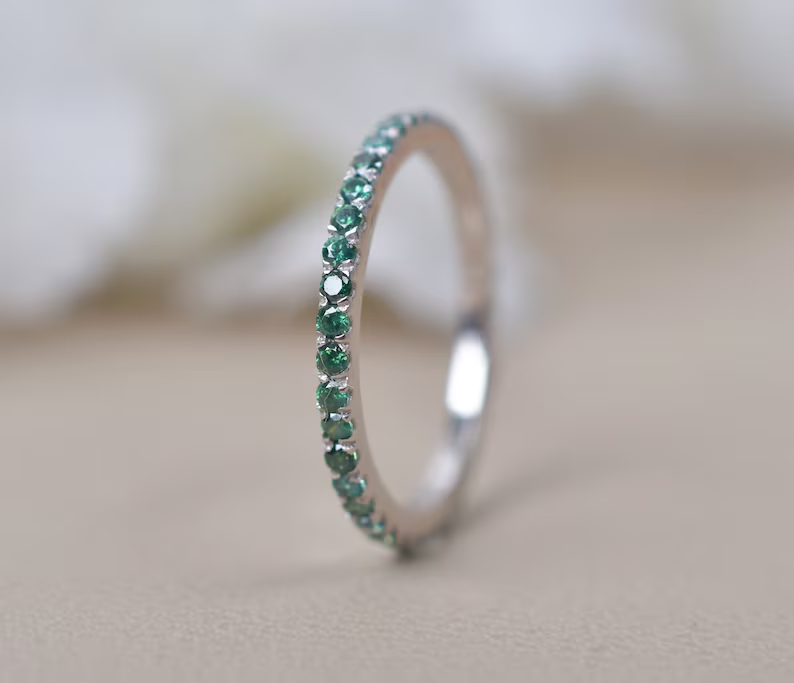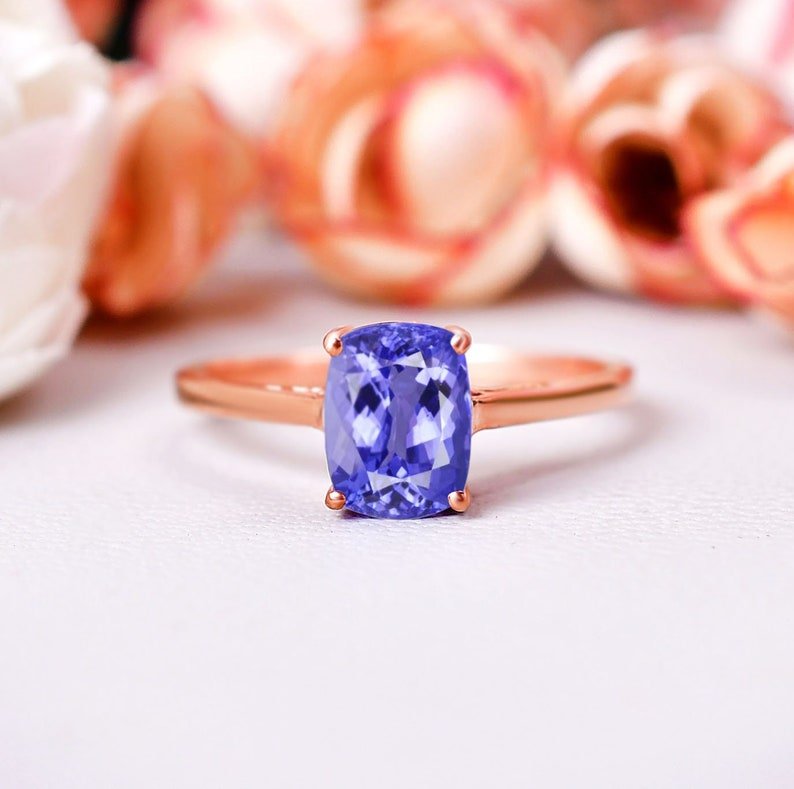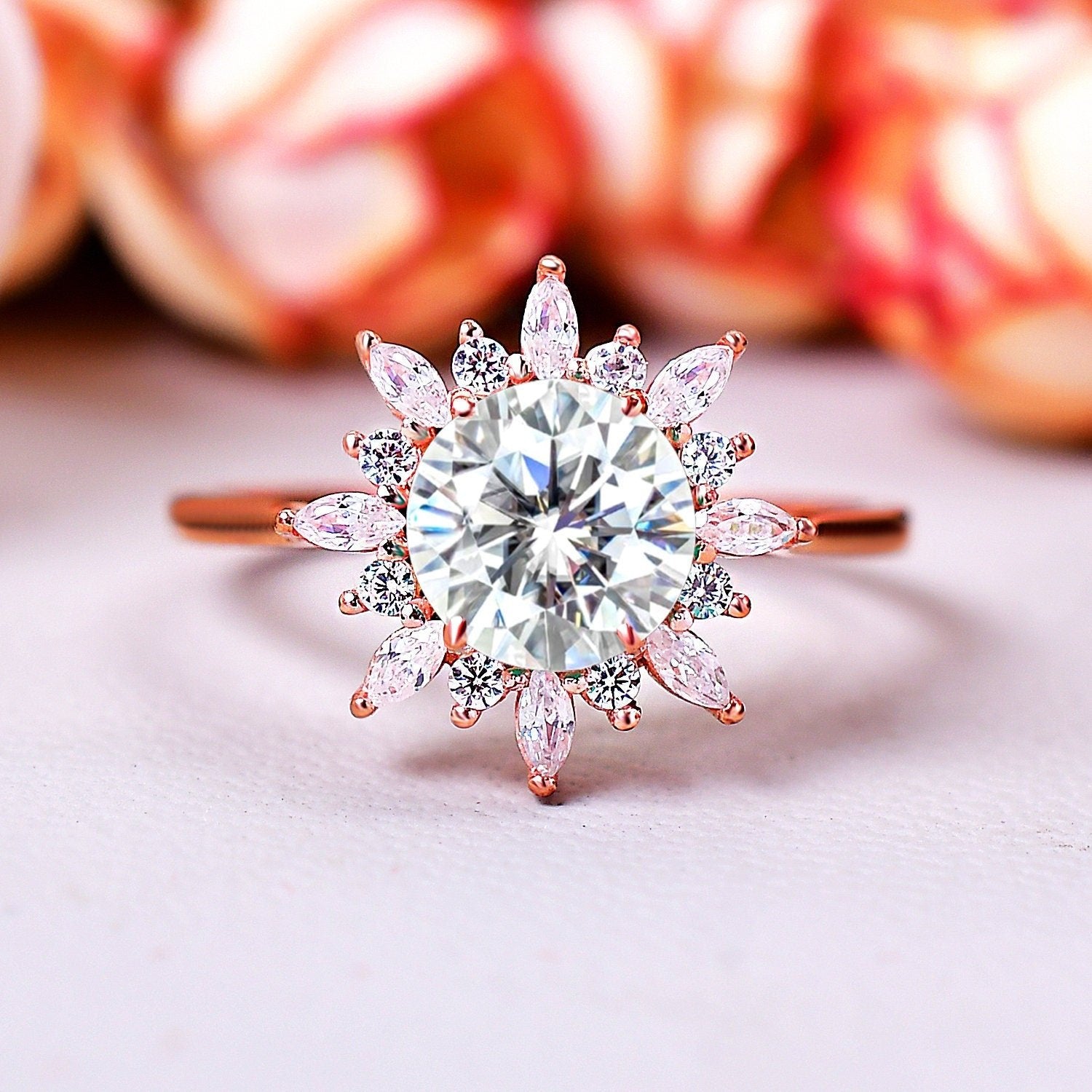Gold vs Diamond Ring: Which One Is Better?
Share

When it comes to fine jewelry, few items are as timeless and coveted as a beautiful ring. For centuries, gold and diamonds have reigned supreme, each with its own unique allure and legacy. We all know the classic image of a diamond solitaire glittering in a velvet box, but the warm, rich tones of a simple gold band hold a power all their own.
But here’s the thing: in the age of custom jewelry and endless options, the choice between a plain gold vs diamond ring can feel like a major decision. It’s not just about aesthetics; it’s about what the ring says, its durability, and what you’re willing to spend. A recent report from The Diamond Registry highlighted a fascinating trend: while diamond prices are stabilizing, the demand for gold, especially in fashion and self-purchase jewelry, continues to grow. This tells us that people are thinking beyond the traditional engagement ring and asking: is a diamond really the "better" choice, or does gold hold its own?
This guide is designed to help you answer that question for yourself. We're going to break down the key differences and similarities between these two iconic choices so you can decide what’s best for you and your lifestyle. Let's get into the nitty-gritty of the gold ring vs diamond ring debate.
Understanding Gold Rings: More Than Just Metal
Before we can compare, we need to know what we’re talking about. A gold ring is a lot more than just a piece of metal—it's a blend of art and science.
What Exactly is a Gold Ring?
At its simplest, a gold ring is jewelry made primarily from gold. But as you’ve probably noticed, not all gold looks the same. That’s because gold is often mixed with other metals to create different colors and to make it stronger.
-
Yellow, White, and Rose Gold:
- Yellow gold is the most classic and traditional color, created by mixing pure gold with silver and copper. Its warm hue is timeless and looks good on almost every skin tone.
- White gold gets its silvery-white look from being alloyed with metals like palladium or nickel. It’s then coated in a thin layer of rhodium to give it that bright, reflective finish. It’s a popular alternative to platinum and offers a modern, clean look.
- Rose gold gets its romantic, blush tone from a mix of pure gold and a higher proportion of copper. This color has become hugely popular in recent years for its unique and vintage-inspired look.
-
Explaining Karats: This is crucial. Karats (K) measure the purity of gold.
- 24K is pure gold (100%), which is beautiful but too soft for everyday wear. It’s easily scratched and bent.
- 18K is 75% pure gold. It’s a great balance of purity and durability.
- 14K is 58.3% pure gold, making it the most common choice for jewelry due to its excellent durability and affordability.
- 10K is 41.7% pure gold, the most durable but with the lowest gold content.
Helpful Guide: How to Measure Ring Size at Home
Advantages of Gold Rings
So, why go for gold?
- Classic Elegance: Gold has a rich history and a warm, elegant appeal that never goes out of style. Whether it’s a simple band or an intricate filigree design, a gold ring feels substantial and timeless.
- Durability and Hypoallergenic Properties: While pure gold is soft, 14K and 18K gold are quite durable for daily wear. Most gold alloys are also hypoallergenic, especially 18K and 14K, making them a safe choice for sensitive skin.
- Affordable Luxury: A pure gold band is significantly more affordable than a large diamond. This makes it a great option for those who want a quality, beautiful piece of jewelry without a high price tag.
- Ease of Customization: Gold is a highly workable metal, making it easy for jewelers to shape and engrave. You can get a custom piece made or have it sized with no fuss.
Drawbacks of Gold Rings
Of course, no material is perfect.
- Susceptibility to Scratches: Even durable karats like 14K gold can get scratched and dented with regular wear. It’s just the nature of the metal.
- Fading and Polishing: The rhodium plating on white gold can wear off over time, revealing a yellowish tint underneath. It needs to be re-plated every few years to maintain its bright white look. Lower karat gold can also lose some luster over time and may require polishing.
- Allergy Risks: While gold itself is hypoallergenic, the alloys used to create different karats can sometimes cause reactions. Nickel, a common alloy in white gold, is a frequent culprit for skin allergies.
Explore: Types of Rings You Should Know Before Buying One
Understanding Diamond Rings: The Sparkle Icon
A diamond ring is a different beast entirely. It’s all about the star of the show: the gemstone.
Diamonds Explained: The Stone Behind the Ring
A diamond ring is a piece of jewelry featuring a diamond, or multiple diamonds, set on a band—most often made of gold or platinum. The value of the ring is driven by the diamond itself. This is where the famous 4 Cs come in.
- Cut: This is the most important C. It’s not about the shape (like round or princess cut) but how well the diamond’s facets interact with light. A well-cut diamond sparkles and shines beautifully.
- Color: Diamonds are graded on a scale from D (colorless) to Z (light yellow or brown). The less color, the rarer and more valuable the diamond.
- Clarity: This measures the presence of tiny imperfections, or "inclusions," inside the diamond. The fewer the inclusions, the better the clarity.
- Carat Weight: This is simply the diamond's weight. A bigger number means a bigger diamond, but remember, a big diamond with a poor cut, color, or clarity won't shine as brightly as a smaller, higher-quality one.
Why Choose Diamond Rings?
- Symbolism: Diamonds have been linked to luxury and eternal love for centuries. An engagement ring is a powerful symbol of lifelong commitment, and no other gemstone carries that weight quite like a diamond.
- Brilliance and Visual Appeal: The way a diamond catches and reflects light is unmatched. It’s a stunning piece of jewelry that truly stands out.
- Long-Term Value: High-quality natural diamonds have historically held their value well and are often seen as an investment piece or an heirloom to be passed down.
- Customization: The 4 Cs allow for incredible customization. You can prioritize a larger carat over perfect clarity, or a stunning cut over perfect color, to fit your budget. The combination of a metal band and a central stone makes a diamond ring vs gold ring a very different aesthetic and financial choice.
Jewelry Care Tip: How to Clean a Diamond Ring?
Potential Cons of Diamond Rings
- Higher Price Point: This is the most obvious drawback. A diamond ring can cost thousands or even tens of thousands of dollars, making it a significant financial commitment.
- Maintenance: To maintain their sparkle, diamond rings need frequent cleaning to remove oils and dirt. The settings also need to be checked periodically to ensure the stone is secure.
- Ethical Concerns: The issue of "blood diamonds" and the environmental impact of mining have made ethical sourcing a major concern for many buyers. We’ll get more into this later.
Gold Ring vs Diamond Ring: Side-by-Side Comparison
Let’s lay it all out. When considering a gold vs diamond ring, you're really looking at two different things.
Material Focus: Metal vs Gemstone
- A gold ring’s value and beauty are primarily in the metal itself. The focus is on the color, purity, and the craftsmanship of the band.
- A diamond ring’s value is driven by the gemstone, with the metal setting playing a supporting role. The setting is there to showcase the diamond.
Durability and Wearability
- Gold is a softer metal, so while a 14K gold ring is durable, it’s prone to surface scratches.
- Diamonds are the hardest natural substance on Earth. That doesn’t mean they’re indestructible, however. A hard knock on the right angle could cause a chip, and the prongs holding the diamond can bend or break, causing the stone to loosen.
Also Read: Silver Ring Benefits: You Must Know It
Symbolic Meaning and Cultural Significance
- Gold rings have a universal appeal, symbolizing wealth, status, and timeless beauty. They’re used in many different cultures for various ceremonies, from weddings to graduation.
- Diamonds have become the iconic, almost universal symbol for engagement and lifelong partnership. The phrase "Gold ring vs diamond ring which is better" often comes down to this specific, culturally charged meaning.
Financial Considerations
- Gold rings have a predictable price based on the weight and purity of the metal.
- Diamond rings have a more complex pricing structure based on the 4 Cs. This allows for more flexibility in budget but also more complexity. The resale value of a diamond can be tricky, as it often sells for less than the purchase price unless it's a rare stone.
Choosing Between Gold and Diamond Rings: What’s Best For You?
So, you’ve got the facts. Now, how do you decide?
Assessing Your Lifestyle and Daily Use
This is probably the most important question to ask yourself.
- Are you active? Do you work with your hands a lot? A simple, sturdy gold band might be a more practical choice.
- Do you have a more formal or low-impact lifestyle? A diamond ring might be a perfect fit, as you won't have to worry as much about bumps and scratches.
- Also, consider maintenance. Are you okay with regular cleaning and occasional re-plating of white gold? Or do you want a low-maintenance piece of jewelry?
Also Read: Top 10 Most Valuable Gemstones In The World
Purpose and Personal Meaning
- Are you looking for an engagement ring or a fashion statement? The purpose will heavily influence your choice.
- Are you choosing a ring to be an heirloom? The longevity and history of both materials can be a factor. A high-quality diamond will last forever, but so will a 24K gold ring.
Budgeting Smartly: Cost vs Value
- Don’t get caught up in the idea that a more expensive ring is a "better" ring. The perfect ring is one you love and can afford.
- If your budget is a concern, remember that the diamond ring vs gold ring choice isn’t an either-or. You can find beautiful rings that feature both a small diamond and a beautiful gold setting, giving you the best of both worlds.
Read More: Cancer Birthstone: Meaning, Symbolism, and Gift Ideas
Unique Insights and Latest Trends
The jewelry world is evolving, and it’s creating some exciting options.
Combining Gold and Diamonds: Best of Both Worlds
You don't have to choose! Many of the most popular engagement and fashion rings today feature a brilliant combination of both. Think of a stunning diamond solitaire set in a rose gold band, or a yellow gold band with a row of small, sparkling diamonds. This combination gives you the warmth and durability of gold with the unmistakable brilliance of a diamond.
Ethical Jewelry: Lab-Grown Diamonds and Recycled Gold
The rise of ethical consumerism is changing the game.
- Lab-Grown Diamonds: These are chemically identical to natural diamonds but are created in a lab. They are more affordable and completely conflict-free, making them a popular ethical choice.
- Recycled Gold: Many jewelers now use recycled gold, which reduces the environmental impact of mining. This is a great option for those who want to be more sustainable.
Personalization and Custom Design Trends
Modern buyers want their jewelry to tell a story. This has led to a boom in custom design, including unique engravings, mixed materials (like gold and platinum), and unconventional diamond shapes. This allows you to create a piece that perfectly fits your style and values.
Conclusion
So, is a gold vs diamond ring better? The answer is that neither is inherently "better" than the other. It really depends on you.
If you’re drawn to a classic, durable, and versatile piece that is rich in history, a gold ring might be your perfect match. If you’re looking for a ring that symbolizes a lifelong commitment with unmatched brilliance and sparkle, a diamond ring is likely the ideal choice. The final decision comes down to your personal values, your lifestyle, and your budget. The most important thing is to choose a ring that feels right to you and makes you happy every time you look at it.
FAQs
Q1. Is gold or diamond better for daily wear?
A solid gold ring (14K or 18K) is generally very durable for daily wear, though it is prone to scratches. A diamond, while extremely hard, requires a secure setting. For an active lifestyle, a simple gold band might be more practical, but a well-made diamond ring is also designed for daily wear. The choice between a gold ring vs diamond ring which is better for daily use, depends on the specific design and your activities.
Q2. Can diamond rings be made without gold? What are common alternatives?
Yes, absolutely. Diamonds are often set in platinum, palladium, or even stainless steel. Platinum is a very popular, durable, and hypoallergenic alternative to white gold.
Q3. How does gold purity affect ring durability and price?
The higher the karat, the softer the gold, and the higher the price. 24K gold is the softest and most expensive. 14K gold is the most durable and a great value, making it an excellent choice for a long-lasting ring.
Q4. What to consider when pairing a diamond with a gold setting?
The color of the gold can affect the look of the diamond. Yellow gold can make a diamond with a slight yellow tint appear more white, while white gold can enhance the brilliance of a colorless diamond.
Q5. How do you care differently for gold rings vs diamond rings?
Plain gold rings can be cleaned with mild soap and water and a soft brush. For diamond rings, it's best to use a specialized jewelry cleaner and a soft brush to get into the crevices of the setting. It’s also important to get a diamond ring inspected by a jeweler annually to check the prongs.



